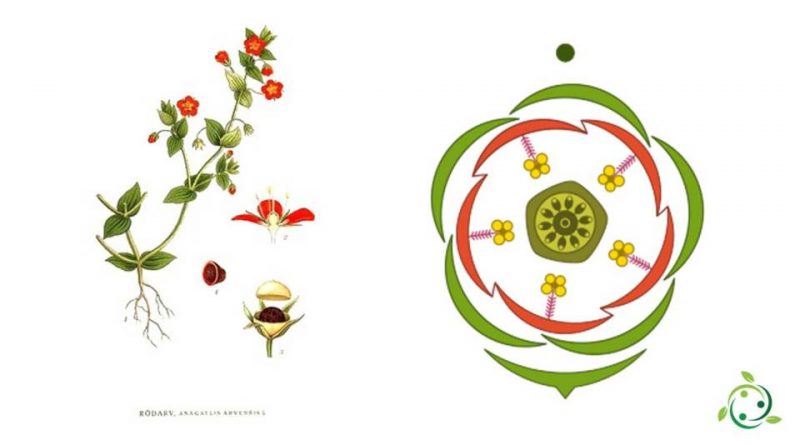Floral diagram
Floral diagram
The term floral diagram or floral formula, in botany, means the graphic representation of the arrangement of the floral elements and the order of the different verticils in cross section viewed from above.
Each whorl is represented as a concentric circumference, around the gynoecium which is depicted with a section of the ovary, the stamens are indicated with a section of the anther, and the protective whorls with the section of the petals and sepals.
In short, the floral formula is a convention adopted to schematize the description of a flower using acronyms and numbers that indicate the whorls and their arrangement.
For the representation of the firoale diagram, symbols are used to schematically represent the structure of the flower.
The conventional abbreviations adopted are the following:
K = chalice (followed by the number of sepals);
C = corolla (number of petals);
P = perigonium (number of tepals);
A = androecium (number of stamens);
G = gynoecium (number of carpels or ovaries);
∞ = number greater than 10;
(x) = x elements welded together.
The formula can also contain symbols relating to the symmetry or sex of the flower (always placed at the beginning of the formula).

